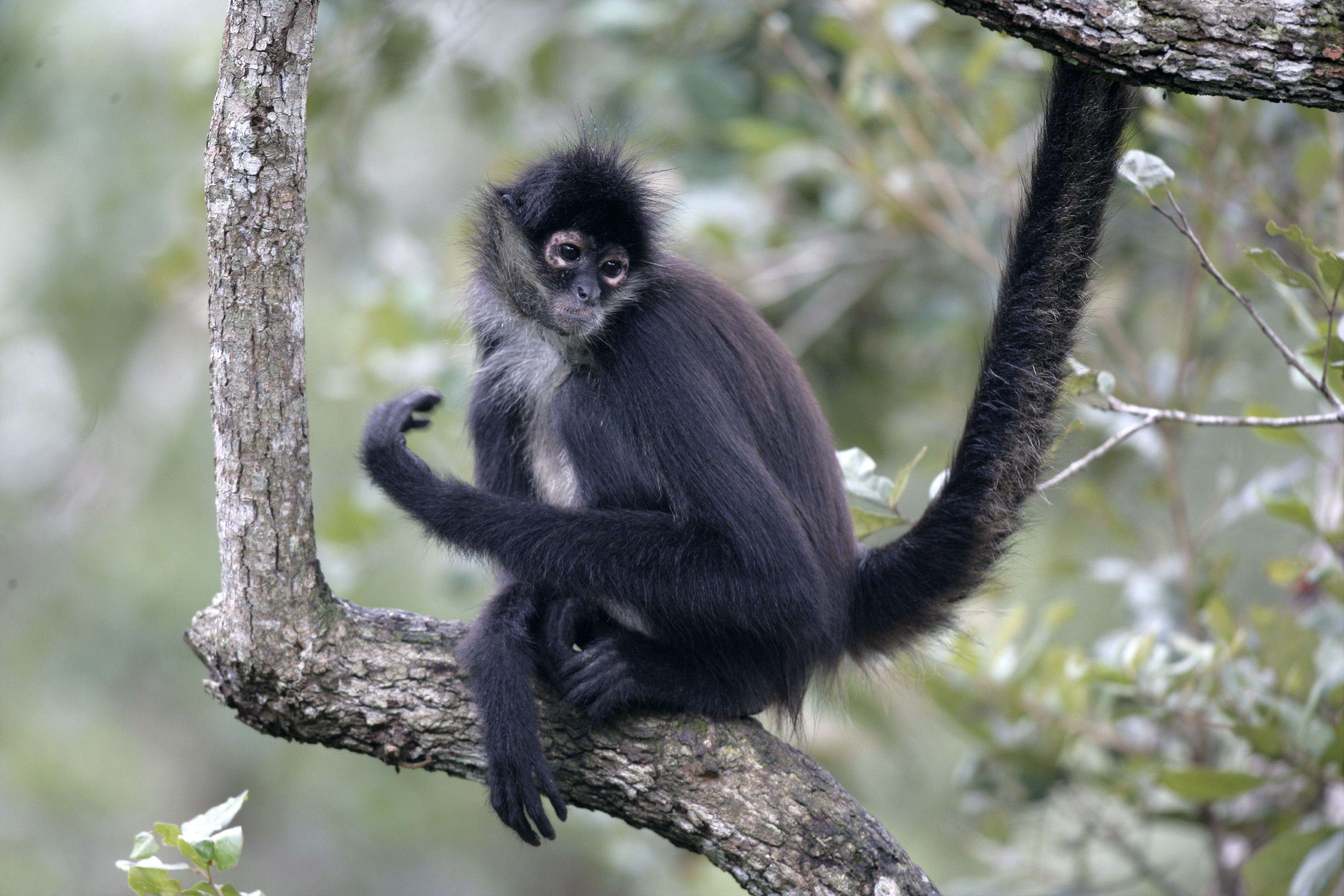Create a free profile to get unlimited access to exclusive videos, sweepstakes, and more!
Human tails obviously vanished, but why?

Whatever evolved into us still had tails for another half a billion years before homo sapiens appeared on the scene. So where are they?
Prehistoric human ancestors didn’t decide to just stand up and walk one day. It is thought to have happened through the gradual and often baffling process of evolution, in which some primate predecessor of ours must have found it more useful to move around upright on land instead of swinging on trees. Maybe there was more food—or fewer predators—where this transition first happened. The reason why is still unclear.
What we now have an answer for is how humans lost their tails on a genetic level. Led by biologist Bo Xia of NYU, a team of researchers whose findings are on the preprint server bioRxiv have revealed the mutation in our DNA that would change how we walked forever. It started with a tailbone (coccyx) injury that left Xia wondering about tailbone origins.
“We do not know what exactly the evolutionary advantage is, though our best guess is the association to positively impact the locomotion of the ancestral hominids,” he told SYFY WIRE. “Natural selection over the evolutionary timescale would select for the species who can adapt to the changing environment.”
When Charles Darwin proposed that the coccyx left him with no doubt we must have emerged from primates with tails, the response was disbelief. The Victorians didn’t exactly want our highly intelligent species to be equated with creatures that swung from trees. That wasn’t his point, but you can imagine an audience in top hats and corsets being offended. Why the loss of a tail ended up being an evolutionary advantage for some species still confuses scientists today, especially when the mutation can cause spinal cord defects. It somehow persisted.
The gene on which the mutation was found, known as the TBXT gene, was previously known. What makes Xia’s discovery so groundbreaking is that he was able to find the exact location on that gene where the mutation occurs. 300 genetic letters in the middle of that gene program both us and apes such as chimpanzees and gorillas to be tailless. Meaning, our ancestors were once mutants.
The TBXT mutation is thought to have occurred randomly 20 million years ago and been passed on until it became the norm for early hominids that would turn into us. “Mutations in the genome have a high level of randomness, and has been observed in many different evolutionary events,” said Xia.” It’s also possible that they trigger some beneficial effect, like hitting a jackpot, allowing the host who carries this mutation to have a better adaptation.”
Primate genomes have a few sections that can be transposed from one area of the genome to the other. Most mutations in these sections are harmless, and those that are usually end up being deleted. Xia and his team wanted to see whether the TBXT mutation would really do away with a tail when it was switched on, and sure enough, the mice they genetically engineered showed hardly any traces of a tail. That is probably what happened with the first tailless primates. For mysterious reasons, these creatures, too heavy to climb trees, thrived.
What is even stranger is that a developing primate embryo will initially start forming a tail because of many other genes involved. Different genes form the three main layers of cells in the embryo, from the ectoderm (outermost) through the mesoderm (middle) to the endoderm (innermost). TBXT is among the genes that start the development of the mesoderm, and if there is a mutation in the coding for one copy, it can cancel out a potential tail. It was these genes that influenced Xia’s hypothesis when it was still in its own embryonic phase.
“Every gene involved in this developmental process could possibly contribute to tail loss,” Xia said. “Extensive future work will be necessary to fully explain the complete genetic map of how hominids have a stabilized no-tail phenotype—or just a coccyx.”
Somewhere, the ghost of Darwin is finally saying “told you so” to everyone who refused to believe him.


























